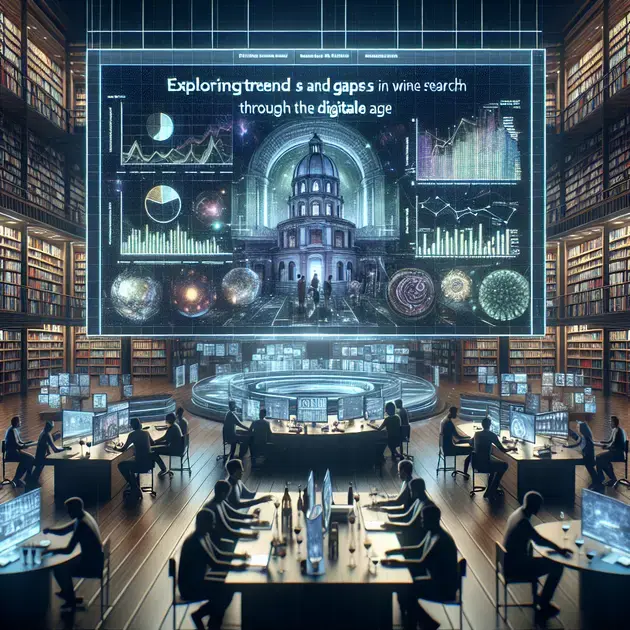When it comes to understanding the effects of a particular phenomenon, conducting a comprehensive literature review is essential. In this post, we will be exploring the impact of various factors through a detailed examination of existing studies and analysis. The process of delving into past research not only provides insights into the subject matter but also helps in identifying gaps that need further exploration.
As the digital age evolves, the significance of literature reviews in shaping scholarly discourse becomes more pronounced. By critically evaluating and synthesizing published works, researchers can contribute to the body of knowledge in their respective fields. In this regard, “Exploring the Impact: Literature Review” serves as a cornerstone for academic inquiry and discovery.

The Power of Literature Reviews in Research
When conducting research, literature reviews play a crucial role in providing a comprehensive understanding of existing knowledge and identifying gaps for further exploration. These reviews involve systematically collecting, analyzing, and synthesizing relevant information from various sources such as academic journals, books, and online databases. One of the key advantages of literature reviews is that they help researchers build a strong theoretical foundation for their studies by offering insights from previous research.
To harness the power of literature reviews in research, scholars can utilize online platforms such as Google Scholar, PubMed, and JSTOR to access a vast array of scholarly articles and publications. By using specific keywords related to their research topic, researchers can identify relevant literature that can inform their studies and contribute to the advancement of knowledge in their field.
Step-by-step guide to conducting literature reviews:
1. Define your research question:
Start by clearly articulating the main objectives of your research and identifying the key concepts and variables that you want to explore.
2. Search for relevant literature:
Use online databases and academic search engines to find scholarly articles, books, and other publications that are related to your research topic.
3. Evaluate the sources:
Assess the quality and credibility of the sources you have collected by considering factors such as author credentials, publication date, and research methodology.
4. Analyze and synthesize the information:
Summarize the key findings and trends from the literature and identify common themes or patterns that emerge across different studies.
5. Identify gaps and opportunities for further research:
Highlight areas where additional investigation is needed and propose potential avenues for future research to address unanswered questions.
Uncovering Key Findings and Trends
Exploring literature reviews allows researchers to uncover key findings and trends that have emerged in their field of study. By analyzing a wide range of sources, researchers can identify common patterns, contradictions, and gaps in existing knowledge that can guide their own research efforts. Understanding key findings and trends from literature reviews is essential for building on previous research and making meaningful contributions to the academic community.
Platforms like Scopus and Web of Science provide access to a vast repository of scholarly articles and citations, allowing researchers to track the impact and visibility of research publications in their respective fields. These tools can help researchers identify influential studies, key researchers, and emerging trends that are shaping the landscape of their discipline.
Step-by-step guide to uncovering key findings and trends:
1. Conduct a comprehensive literature search:
Use advanced search techniques and filters to access relevant literature from reputable sources and databases.
2. Analyze the literature systematically:
Organize the collected literature based on themes, methodologies, and key findings to identify patterns and trends across different studies.
3. Compare and contrast different perspectives:
Consider the varying viewpoints and arguments presented in the literature to gain a comprehensive understanding of the research landscape.
4. Identify emerging topics and research gaps:
Look for areas where new research is being conducted and pinpoint gaps in existing literature that present opportunities for further investigation.
5. Synthesize the information into actionable insights:
Summarize the key findings and trends from the literature review to inform the development of your research objectives and hypotheses.
Challenges and Opportunities in Literature Exploration
While literature exploration is a valuable aspect of research, it also comes with its own set of challenges and opportunities. One of the primary challenges researchers face is the vast amount of information available, which can make it difficult to sift through and identify relevant sources. Additionally, ensuring the quality and credibility of the literature accessed is crucial for the robustness of research findings.
Despite these challenges, literature exploration presents numerous opportunities for researchers to expand their knowledge, discover new insights, and contribute to the advancement of their field. By embracing emerging technologies and innovative search tools, researchers can overcome challenges and leverage the vast repository of scholarly knowledge available to them.
Step-by-step guide to navigating challenges and opportunities in literature exploration:
1. Stay updated on research trends and tools:
Keep abreast of the latest developments in research methodologies and digital tools that can enhance your literature exploration process.
2. Collaborate with peers and experts:
Engage in discussions and collaborations with fellow researchers and subject matter experts to gain new perspectives and insights into your research area.
3. Utilize advanced search strategies:
Explore advanced search techniques and filters offered by academic databases to streamline your literature search and access relevant sources efficiently.
4. Address limitations and biases in the literature:
Be mindful of potential biases and limitations in the literature you review, and strive to provide a balanced and objective analysis of the sources.
5. Embrace interdisciplinary approaches:
Consider exploring literature from diverse disciplines and fields to gain a holistic understanding of your research topic and uncover novel connections and insights.

Understanding the Role of Literature Reviews
When conducting research in any field, literature reviews play a crucial role in providing a comprehensive overview of existing knowledge. In the context of analyzing the influence of literature on research within the wine industry, understanding the role of literature reviews becomes even more significant. Researchers looking to explore aspects such as the production, distribution, and market trends of the world’s most expensive wines must rely on literature reviews to gather insights from past studies, industry reports, and expert opinions.
By reviewing relevant literature on the topic of the most expensive wines, researchers can identify gaps in existing knowledge, trends in consumer preferences, and challenges faced by producers. This allows them to frame their research questions effectively and develop a methodology that addresses key issues within the industry. Literature reviews also help researchers establish the theoretical framework for their study, providing a basis for interpreting findings and making informed conclusions.
Moreover, literature reviews serve as a benchmark for evaluating the significance of new research contributions. By comparing their findings with existing literature on the topic of expensive wines, researchers can validate their results, identify areas for further exploration, and contribute to the advancement of knowledge within the field. Overall, understanding the role of literature reviews is essential for conducting rigorous and impactful research in the domain of high-end wine markets.
Analyzing the Influence of Literature on Research
When exploring the influence of literature on research in the context of the world’s most expensive wines, it becomes evident that the quality and depth of the literature reviewed can significantly impact the outcomes of a study. Researchers delving into this niche market need to analyze a variety of sources, including academic papers, industry publications, and expert reviews, to gain a comprehensive understanding of the factors driving the high prices of luxury wines.
By critically evaluating the literature on the subject of expensive wines, researchers can identify key themes, emerging trends, and varying perspectives within the industry. This analysis not only informs the research design and methodology but also shapes the interpretations of the results obtained. Additionally, examining the influence of literature on research enables scholars to build upon existing knowledge, challenge conventional wisdom, and propose innovative solutions to persistent issues in the wine market.
Furthermore, the impact of literature on research extends beyond the academic realm, influencing decision-making processes in the wine industry and shaping consumer perceptions of luxury wines. By synthesizing and analyzing the available literature, researchers can provide valuable insights to industry stakeholders, policymakers, and enthusiasts seeking to understand the complexities of the market for the most expensive wines.
Effective Strategies for Conducting Literature Reviews
Conducting a thorough literature review on the topic of the world’s most expensive wines requires the implementation of effective strategies to ensure the quality and relevance of the gathered information. Researchers embarking on this endeavor should start by clearly defining their research objectives and identifying the specific aspects of the luxury wine market they intend to explore. This initial step helps in narrowing down the scope of the review and focusing on the most pertinent sources.
Next, researchers should utilize a combination of search methods, including academic databases, industry reports, and reputable websites, to access a diverse range of literature on expensive wines. Employing search terms such as “luxury wines,” “premium vineyards,” and “high-priced vintages” can help in retrieving relevant articles and studies that contribute to a comprehensive understanding of the subject matter. Additionally, utilizing citation tracking and reference lists from key publications can lead to the discovery of seminal works and influential authors in the field.
Organizing the gathered literature systematically, by categorizing sources according to themes, methodologies, and key findings, is essential for synthesizing the information effectively. By critically evaluating each source, identifying common patterns, and contrasting differing viewpoints, researchers can develop a coherent narrative that informs their research questions and methodology. Finally, documenting the entire review process, including search strategies, inclusion criteria, and evaluation methods, is crucial for transparency and reproducibility in research on the most expensive wines.
Conclusion
Understanding the role of literature reviews in research, especially within the wine industry, is paramount for gaining insights into the production, distribution, and market trends of premium wines. By reviewing relevant literature, researchers can identify gaps, trends, and challenges, shaping their research questions effectively. It establishes a theoretical framework and aids in making informed conclusions, contributing significantly to rigorous research in high-end wine markets.
Analyzing the influence of literature on research reveals that the quality and depth of reviewed literature greatly impacts study outcomes. Critical evaluation helps identify themes, trends, and perspectives, informing research design and interpretations. It fosters innovation, challenges existing knowledge, and influences decision-making processes beyond academia, shaping consumer perceptions and providing valuable industry insights.
Effective strategies for conducting literature reviews are crucial for obtaining relevant information on luxury wines. Clear research objectives, varied search methods, and systematic organization of literature ensure quality and relevance. By evaluating sources, identifying patterns, and documenting the review process transparently, researchers can synthesize information cohesively and contribute meaningfully to the understanding of the complex world of expensive wines.